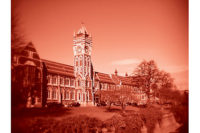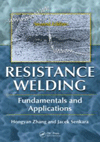Iowa State's Wind Energy Manufacturing Laboratory focuses on improving the manufacturability of large components used in wind turbines.
Sports teams at Iowa State University are known as the Cyclones. So, it’s no surprise that the institution is home to the Wind Energy Manufacturing Laboratory (WEML). The facility was established in 2009 in partnership with Sandia National Laboratories and TPI Composites Inc., a leading manufacturer of wind turbine blades that operates a 316,000-square-foot factory in Newton, IA.
During the past decade, Iowa has become the center of the U.S. wind energy industry. The state has more than 2,500 wind turbines, and it boasts more than 80 companies involved in the wind energy industry supply chain.
Iowa State’s WEML was originally established to support a research project on wind blade manufacturing. The Advanced Manufacturing Innovation Initiative is a three-year, $6.3 million project funded by TPI, the U.S. Department of Energy and the Iowa Power Fund, a state program to advance energy innovation and independence.
“The Wind Energy Manufacturing Laboratory is focused on improving the manufacturability of the large components used in megawatt-scale wind turbines,” says Frank Peters, an associate professor of industrial and manufacturing systems engineering in the College of Engineering. “Current efforts are focusing on composite blades, with plans for work on towers and metal castings.”
The laboratory is staffed by faculty from the school’s aerospace engineering and industrial and manufacturing systems engineering departments. There are currently four faculty members, five graduate students and five undergraduate students involved in the facility.
The researchers’ goal is to develop new, low-cost manufacturing systems that could improve the productivity of turbine blade factories by as much as 35 percent. Traditionally, composite wind turbine rotors are manually assembled. Manufacturers are eager to automate the process to cut costs, boost productivity and improve quality.
However, that’s not an easy task, because blades are big. A single blade can be 40 to 50 meters long and weigh 14,000 to 20,000 pounds. To operate effectively, every rotor blade has to be built within strict tolerance limits. It has to withstand 20 years of harsh conditions in the field and handle speeds up to 200 miles per hour at the tip.
“There are some unique challenges in producing these components,” says Peters. “Previous methods for automating composite structures, which largely originated from the aerospace industry, do not necessarily translate. For blade manufacturing to remain competitive in the United States, we need to be able to improve manufacturing efficiency through better processes and selected use of automation where there are financial benefits.
“Through manufacturing improvements, we will be able to reduce the cost of wind energy to make it even more competitive with other energy sources,” claims Peters. “This can be done by reducing capital and operating costs by making components more reliable.
“By improving manufacturing processes, we can reduce design safety factors and be able to reduce the weight of the system,” adds Peters. “Furthermore, through design for manufacturability, we will be able to make components more reliable and cheaper, while overcoming transportation challenges.”
Peters and his colleagues are currently tackling issues such as improvements to nondestructive evaluation techniques and developing a new method of measuring and controlling fabric placement in the blade molds.
Some of the WEML’s discoveries are being shared with the entire industry. For instance, the group is presenting two posters at the American Wind Energy Association’s WindPower 2011 conference and exhibition, which is being held this month in Anaheim, CA.
“We are also offering a graduate level course in wind energy manufacturing that utilizes the laboratory,” says Peters. “This course explores the challenges in the supply chain for making and utilizing large components, such as blades, towers and nacelles.”




